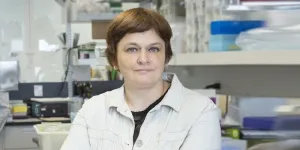(Press-News.org) MADISON–Land was once set aside as Native American reservations because it was undesirable and low in resources, but now interested Native Americans may have economic leverage in the growing industry of clean energy. A team of researchers led by UW–Madison professors Dominic Parker and Sarah Johnston quantified the economic potential of wind and solar energy projects on these lands and discussed the regulatory barriers for tribes wishing to tap into it.
“This is the first comprehensive analysis of the potential income that renewable energy projects could provide and an outline of the regulatory barriers facing tribes wanting to pursue them,” says Parker, a professor of agricultural and applied economics. “However, we emphasize that this is not a call to impose federal energy priorities on unwilling tribes.”
The study, recently published in Nature Energy, found that reservation lands are 46% less likely to host wind farms and 110% less likely to host solar farms than otherwise similar adjacent lands. Adding to this striking overall disparity, wind and solar resources are especially abundant in the poorest 25% of reservations. Most of these are located in remote areas where income opportunities from casinos and nearby urban labor markets are lacking.
The researchers used a statistical model to quantify the disparity between on- vs. off-reservation land for wind and solar farms installed by 2022. The team combined those results with energy demand forecasts through 2050 to predict the income that tribes would leave on the table if the current disparity persists until then.
In a scenario of high electrification and future reliance on renewables to meet energy demand, tribes would forego over $19 billion in lease and tax earnings by 2050, or $11.6 billion for a low-electrification scenario. The equivalent estimate for casino earnings through 2050 is $67 billion.
The researchers identified multiple barriers to development that help explain the disparity between clean energy projects on- and off-reservation land. One of the biggest is the complexity and uncertainty of the permitting process—for building both the facilities and the transmission lines that feed the generated energy into the power grid.
“An earlier study found that 49 regulatory steps were required to develop oil on reservations compared to four steps for off-reservation projects,” says Parker. “This regulatory jumble makes energy projects almost as uncommon as where they are forbidden, such as in public parks, forests and wildlife refuges.”
Launching a project on any privately owned land starts with obtaining leasing agreements, which generate income for landowners. For utility-scale wind farms, which are more spatially expansive than solar farms, this usually requires multiple landowners to sign off on leases. Because of historical land allotment policies, reservation land has more extensive ownership partitioning than non-reservation land, with an average of 14 owners for a 160-acre parcel.
This means developers planning to build a wind farm, which requires at least 5,000 contiguous acres, on 32 such parcels need to obtain the agreement of 448 owners to lease their land. That makes it very difficult for Native Americans on reservations—the poorest minority group in the United States—to pursue renewable energy projects while wealthier people elsewhere have been benefitting from federal and state subsidies, notes Parker.
Energy sovereignty—allowing tribes to implement their own goals without regulatory steps imposed by federal and state jurisdiction—would help reduce barriers for development, according to the authors. This sovereignty would enable tribes to exercise their right to use or not use the natural resources on their land. It could also prevent a repeat of historical mistakes like efforts to build hydroelectric dams on tribal land in the mid-20th century. Some of these dams were built without tribal consent, harming salmon runs and causing flooding.
“Rolling back the red tape will be critical so that tribes interested in development can realize the economic potential of their own resources,” says Parker. “The key is to avoid green colonialism by not pressuring uninterested tribes while at the same time making it feasible for those wanting the income.”
###
Silke Schmidt
END
Streamlining energy regulations on Native American reservations could help alleviate poverty
2024-09-10
ELSE PRESS RELEASES FROM THIS DATE:
UT microbiologist Wilhelm honored as Fellow of the Royal Society of Canada
2024-09-10
Steven Wilhelm joins a distinguished roster this year with his election as a fellow of the Royal Society of Canada (RSC) Academy of Science. This recognition is the RSC’s highest honor in areas of arts, social sciences, humanities, and science.
“The RSC inducts fellows to help them build a better future in Canada and the world. As a native Canadian, this honor is the pinnacle of what I could have hoped for in my career,” said Wilhelm, the Kenneth and Blaire Mossman Professor in UT’s Department of Microbiology. “It also provides an opportunity for me to work with my collaborators ...
NCCN Policy Summit explores how to build an inclusive cancer center workplace culture that better serves everybody
2024-09-10
WASHINGTON, D.C. [September 10, 2024] — The National Comprehensive Cancer Network® (NCCN®) held an oncology policy summit today in Washington, D.C., focused on Advancing Diversity, Equity, and Inclusion in the Cancer Workforce. The event featured a keynote address from Tiffany Wallace, PhD, Branch Director, Disparities Research Branch, National Cancer Institute (NCI) Center for Cancer Health Equity. Panel discussions focused on how to establish and prioritize a culture of diversity, equity, inclusion, and belonging and maintain the commitment through a changing policy landscape. A series of ...
Games, puzzles and reading can slow cognitive decline in the elderly — even in those with mild cognitive impairment
2024-09-10
By Ann Kellett, Texas A&M University School of Public Health
The aging process can lead to diminished cognitive functioning for older adults. In addition, about 10 percent of people previously diagnosed with mild cognitive impairment develop Alzheimer’s disease or other forms of dementia every year.
Although a few studies have found that activities such as putting together jigsaw puzzles can protect against cognitive aging, the benefits of these activities in preventing or postponing cognitive ...
An antidiabetic helps the immune system recognize reservoirs of HIV
2024-09-10
Researchers at Université de Montréal’s affiliated hospital research centre, the CRCHUM, say the discovery could help lessen and even eliminate viral loads in people undergoing antiretroviral therapy.
Metformin, a drug used to treat type 2 diabetes, could help deplete the viral reservoir and eliminate it entirely in people living with HIV who receive antiretroviral therapy, Canadian researchers say in a new study.
In 2021, a team led by immunologist Petronela Ancuta of Université de Montréal’s affiliated hospital research centre, ...
Department of Energy grant advances clean energy studies
2024-09-10
Dr. Berna Hascakir, professor in the Harold Vance Department of Petroleum Engineering at Texas A&M University, was selected as part of a $17 million grant from the U.S. Department of Energy’s (DOE) Office of Fossil Energy and Carbon Management. The investment will support university-led projects that advance decarbonization and net-zero greenhouse gas emissions.
In partnership with Texas A&M, Texas Tech University, Howard University, and the University at Buffalo, this initiative unites three minority-serving ...
Finding the right path(way) to reduce fat accumulation in the liver
2024-09-10
Using a novel stem cell platform, a team of Medical University of South Carolina researchers has identified a pathway that could be targeted by drugs to reduce fat accumulation in patients with a common form of fatty liver disease known as metabolic dysfunction-associated steatotic liver disease, or MASLD. The MUSC team was led by Stephen Duncan, Ph.D., SmartState Endowed Chair in Regenerative Medicine at MUSC, and Caren Doueiry, an M.D., Ph.D. candidate in Duncan’s laboratory. The team reports its findings in the International Journal of Molecular Sciences.
Almost a quarter of Americans have MASLD, formerly known as non-alcoholic fatty liver disease. It ...
MicroDicer and MicroGrater make quick work of tumor dissection
2024-09-10
As fascinating as it is to work in a modern biology lab, in many cases a lot of repetitive, detailed work is necessary before the research can start. For example, cancer researchers are now capable of using hundreds or even thousands of small, lab-grown tumor samples – known as organoids – to test multiple cancer therapies, including immunotherapies, at once.
To produce organoids, researchers often need to mince a fresh tumor into small pieces by hand, using scissors to snip, snip, snip the specimen down to submillimeter size. This dissection work is tedious and yet often done by skilled – and usually overqualified ...
Phase II study of taletrectinib shows clinically meaningful overall response and favorable safety in patients with ROS1+ non-small cell lung cancer
2024-09-10
(San Diego, Calif.--September 10, 2024, 10:35 a.m. PCT) – The ROS1 tyrosine kinase inhibitor (TKI) taletrectinib demonstrated high overall and intracranial responses, and a favorable safety profile with low incidence of neurologic adverse events in TKI-naive and TKI-pretreated patients with ROS1+ non-small cell lung cancer (NSCLC).
These results were presented today at the International Association for the Study of Lung Cancer 2024 World Conference on Lung Cancer by Dr. Geoffrey Liu, from Princess Margaret Cancer Centre, ...
LUMINOSITY trial demonstrates telisotuzumab vedotin shows durable response in Asian patients with c-Met protein-overexpressing EGFR WT nonsquamous NSCLC
2024-09-10
LUMINOSITY Trial Demonstrates Telisotuzumab Vedotin Shows Durable Response in Asian Patients with c-Met Protein-Overexpressing EGFR WT Nonsquamous NSCLC
(San Diego, Calif.--September 10, 2024 10:35 a.m.) -- The c-Met-directed antibody-drug conjugate telisotuzumab vedotin demonstrated durable responses and an acceptable safety profile in patients of Asian race with c-Met protein-overexpressing, epidermal growth factor receptor (EGFR) wildtype (WT), locally advanced/metastatic nonsquamous non-small cell ...
PM2.5 exposure may affect lung cancer in women who have never smoked
2024-09-10
(San Diego, Calif.--September 10, 2024, 10:35 a.m. PCT) – Recent air pollution exposure in the form of particles smaller than 2.5 micrometers (PM2.5) exposure may significantly impact lung cancer in women who have never smoked, with notable differences in stage IV diagnoses among EGFR+ patients, according to research presented today at the International Association for the Study of Lung Cancer (IASLC) 2024 World Conference on Lung Cancer.
The International Agency for Research on Cancer (IARC) categorized outdoor air pollution and its key component, particulate matter PM2.5, as Group 1 carcinogens in 2013, indicating that they cause lung cancer. Associations between ...








